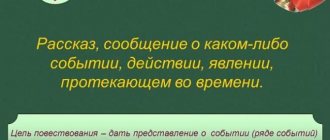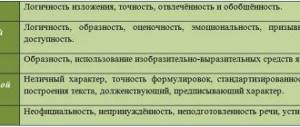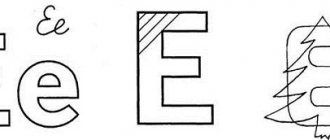Development of phonemic hearing. Stage 1 - recognition of non-speech sounds
Development of phonemic hearing.
Stage 1 – recognition of non-speech sounds.
The goal of the first stage is the development of auditory attention and auditory memory, which is especially important for the successful development of phonemic perception in general. The inability to listen attentively to the speech of others is often one of the reasons for incorrect pronunciation, so it is necessary to teach the child to hear sounds and be able to compare them.
Let's look at what games and exercises can be done with children at the first stage of work.
Invite your child to listen to the sounds outside the window: “Close your eyes and listen!” What's making noise? What's buzzing? Who's screaming? Who's laughing?" Use the following games:
Game "Sun or Rain?"
Today we will go for a walk. There is no rain. The weather is good, the sun is shining, and you can pick flowers. You go for a walk, and I will ring the tambourine. Let's have fun walking to these sounds. If it starts to rain, I'll start banging on the tambourine. And when you hear the knock, you should run under your umbrella. Listen carefully!
The game “Sun and Rain” is quite simple, however, children really like it and it’s always fun!
Game "Big or Small".
Place two toy hares (bears, dolls) on the table - a large one and a small one. Explain and show how the big hare, who has a lot of strength, plays the drum loudly, and the little one plays quietly. Then cover the toys with a screen and behind it make loud and then quiet beats on the drum. The kid must find out and show which of the hares just played.
Such games should be played with children starting from 2-3 years old. But, even if the kids are older, and you have discovered a decrease in phonemic hearing, you should also start working with these games. Because only gradually increasing the complexity of tasks will achieve maximum efficiency.
Stage 2 – distinguishing the height, strength, timbre of the voice.
At this stage, it is necessary to teach the child to understand the intonation of speech and to master the means by which the emotional shades of speech are expressed.
Game "Far - Close".
The game is aimed at developing the basic qualities of the voice: strength, height.
An adult shows the child a toy kitten and asks him to listen carefully and remember how it meows when it is close (loud), and how it meows when it is far away (quiet).
Then he says “Meow”, changing the strength of his voice, and the baby guesses whether the kitten is meowing close or far away.
Then the baby himself meows at the adult’s signal: “far” - “close”.
A further complication of the game is that the child will distinguish between meows, focusing on the timbre and individual characteristics of the speaker’s voice. The adult explains that the kitten is very afraid of the puppy and meows pitifully, trembling with fear. The child should meow, feigning fear.
Similarly, you can play by distinguishing where the steamer is humming (oooh) - far away (quietly) or close - (loudly); what kind of pipe is playing - a large one (“oo-oo-u” pronounced in a low voice) or a small one (“oo-oo-u” pronounced in a high voice); who is crying - a boy (“a-a-a” in a low voice) or a girl (“a-a-a” in a high voice).
In addition, at this stage it is important to teach the child to determine the tempo of speech by ear. Games for performing movements at an appropriate pace will help with this.
Game "Guess what to do."
An adult pronounces the phrase: “The mill grinds grain” several times at different tempos. Children, imitating the operation of a mill, should make circular movements with their hands at the same pace at which the adult speaks. You can also play on other phrases: (“Our feet walked along the road”) or even poetry:
A drop once, a drop two, A drop slowly at first - Drip, drip, drip, drip. (slow clapping) The drops began to keep up. Drop drop catch up - Drip, drip, drip, drip (pop more often). Let’s quickly open the umbrella and protect ourselves from the rain (hands above our heads).
Use dramatization.
An adult tells the fairy tale “The Three Bears”, accompanying his speech with illustrations. Pronouncing remarks either very low, then medium in pitch, then in a high voice he asks: “Who is saying this?” The kid guesses the bears.
Ask, for example: “What did Bear say when he saw his chair moved?”
The baby, answering questions, changes the pitch of his voice accordingly. An adult must ensure that, imitating Mishutka, the Bear and the Bear, the child does not speak very high (to the point of squeaking) and very low (to the point of hoarseness in his voice), that is, to raise and lower his voice within the limits accessible to him.
You can dramatize this tale with older children.
When playing with a 2-4 year old child, the adult directs the course of the game, taking on the role of the leader. Children 5-7 years old, having learned the rules of the game, can play independently.
Synopsis “Sounds around us” with ONR
Topic: Sounds around us
Objectives: - consolidation of ideas about body parts, clarification, expansion and activation of the dictionary on the topic “Part of the body”, introduction of the term “speech” sound; — development of auditory attention and perception, memory, mobility of the organs of the articulatory apparatus, fine motor skills; — formation of skills of cooperation, mutual understanding, goodwill, independence.
Equipment: balls, drum, 2 hares, musical instruments, pictures for a poem and articulatory gymnastics.
Progress of the lesson
1. Org. moment.
Children go to the tables, stepping over the balls. — Imagine that these are not balls, but puddles, and you need to step over the puddles to get to the place. Place your hands on your belt. Walk with your knees high. - Well done. They deftly completed the task, stepped over the puddles and did not get their feet wet. Sit down.
2. Introduction to the topic.
Game "What do you hear?" — Listen to the sounds outside the window. (Children close their eyes.) - What’s that noise? (Trees, leaves.) - What’s buzzing? (Cars.) - Who is screaming? (Boys, children.) - Who is talking (People.) - Listen carefully and determine what sounds are coming from the corridor. (Children answer.) - Tell me, what do we hear? /Sounds/
3 Work on the topic.
Game "Hide and Seek".
- That's right, now I suggest you listen carefully to the sound of the drum and find a surprise. The teacher hides 2 rabbits in a box. Children are looking for a gift. They focus on the strength of the drum beat: loud - close, quiet - far.
Game "Guess by sound".
Two hares - big and small. The big hare has a lot of strength - he plays the drum loudly, strongly, and the little one is quiet. The teacher behind the screen hits the drum (the beat alternates loudly and quietly). - Guess which hare just played? - How did you guess? - Tell me, what are we hearing? /Sounds/
4. Physical education. just a minute.
There are nails on our fingers, palms and elbows on our hands. Face, neck, shoulders, chest And don't forget the tummy. There are knees. There is a back, but there is only one. On our head we have two ears and two lobes. Eyebrows, cheeks and temples, Two nostrils that are so close. Chin under lip. That's what you and I know!
5. Differentiation of non-speech sounds.
— Bunnies love to play other musical instruments. Guess what it sounds like. Game "Learn a musical instrument." The teacher demonstrates playing musical instruments of various sizes - tambourine, bell, pipe. Children listen to the game and guess the musical instrument. - Tell me, what are we hearing? /Sounds/
House for You construction company reviews
6. Development of auditory attention and memory.
Sounds can be produced by many objects that surround us. Listen to the poem and try to remember / showing object pictures / Somewhere dogs growled: rrrr. In the stall the cows mooed: moo-moo-moo. In the room the flies were buzzing: w-w-w. The cars were crackling: tr-tr-tr. The leaves rustled in the wind: sh-sh-sh. And the mosquitoes kept singing: z-z-z. - Help me tell it again (The adult reads the poem, the children finish the last sounds).
7. Introduction to speech sounds.
- Toys, cars, dogs - everything can make sounds. Can a person speak sounds? - Give an example - Correct! A person can pronounce different sounds, for example, a, u, y...
Game “Who Said Boom?” - Find out by the voice: who said “boom”? The teacher chooses the driver. The child driver closes his eyes. He must identify by voice the one who said “boom.”
The sounds that a person speaks are called “speech sounds”. - How can a person pronounce them? - Well done! A person pronounces various sounds with the help of lips, tongue, teeth. So that they listen to us and help them always speak correctly, we will do exercises for them. Exercises: “Frog”, “Baby Elephant”, “Pancake”.
8. Summary of the lesson.
A) - What new did you learn today? - What did you like? — What will you tell your parents about at home? B) analysis of the work of each child.
Author of the material: Smykova Olga Vladimirovna
Also on topic:
Joint activity of a teacher-speech therapist and children of the preparatory group with OHP on sound analysis
Topic: “LAND OF SOUNDS”.
Objectives: develop auditory attention and phonemic hearing; learn to distinguish between non-speech and speech sounds; clarify the articulation of vowel sounds; learn to highlight the vowel sound at the beginning of a word, come up with words based on a given vowel sound; differentiate the concepts “sound”, “word”; learn to distinguish between short and long words; learn to control your voice, change its strength and volume; develop the ability to listen to others; cultivate a kind attitude towards others.
Progress of the lesson
Teacher-defectologist (U.-d.). Guys, do you want to go to the land of sounds? This country is invisible, but it surrounds us everywhere, because sounds are everywhere. They cannot be seen, they can only be heard and spoken. Let's remember what sounds you can hear while sitting at home.
Children remember that they heard the sound of wind, rain, thunder, a car or a train driving, birds singing, dogs barking.
U.-D. Guys, every object has its own “voice”. Let's listen to the voices of various objects.
Game "Attentive Ears".
The teacher behind the screen makes noises with different objects, and the children guess which object made the noise. (The drum beat, the bell rang, the tambourine sounded, they tore the paper, poured water, hit the ball, the ball rolled on the table, etc.)
U.-D. But every person also has his own voice. Do you recognize each other by voice? Let's play.
Game “Come on, close your eyes, find out who called you!”
U.-D. All living beings have their own voice and make different sounds,
The recording “Voices of domestic birds and animals” is turned on. Children guess who they heard (dog, rooster, cow, cat).
U.-D. Guys, how can we make sounds? (With feet.) Let's stomp quietly and quietly. And now it's loud, loud. How else can we make sounds? (With hands.)
Let's rub our palms and listen to what sound we make... And now let's clap quietly... And now loudly... And what else do we make sounds with? (With their mouths.)
Close your mouth and try to say the word “hello.” Nothing succeeded?
Children say that the mouth can open and close, the tongue, teeth, lips help us make sounds.
At this moment, a rustling sound is heard. Children listen, follow the rustling sound and find a small hedgehog in the dry leaves.
U.-D. Would you like me to tell you a story about a hedgehog?
Children sit on the carpet, and the teacher tells a story, accompanying it by showing pictures-symbols that cause active onomatopoeia.
One day a little hedgehog went for a walk alone. He stomped through the forest - stomp, stomp, stomp. Suddenly he saw that he was lost. The hedgehog got scared and cried quietly, and the tears began to fall - drip-drip-drip. And then a cloud covered the sun, and the rain pattered on the dry leaves - bam-bam-bam. And then a strong wind began to roar - ooh-ooh; howled - v-v-v. The hedgehog became completely scared, and he cried loudly, loudly, and the tears began to fall harder - drip-drip-drip! But suddenly the leaves rustled - shhhhh. A large beetle crawled out from under them. He said: “Don’t cry, hedgehog, I’ll take you home, and on the way I’ll sing you a song.” And the beetle sang - w-w-w. Then they met a mosquito, who also agreed to take the hedgehog home and at the same time sang his song - z-z-z. And then they met a cheerful stream. He said that he would lead the hedgehog to the house itself. They ran together and sang the stream's song - ssss. The stream led the hedgehog to the house itself, and his mother was already waiting for him there. She warmed the tea, and the teapot happily banged its lid - b-b-b-b. Mom kissed the hedgehog, and he said that he would no longer walk alone, and snorted joyfully - pfft-pfft-pfft.
U.-D. Guys, do you know that sounds are very friendly with each other, and when they are combined, words are obtained. If there are few sounds, then the word is short, and if there are many sounds, then the word is long. Let's play words!
Game "Long and short words."
Children sit around a table with a large sheet of paper and two crayons: a long green one and a short red one. The teacher shows the children pictures, pronounces the words together and “claps.” Then choose a long or short chalk. One of the children says the word again and at the same time draws a path. Long words leave a long trail, and short words leave a short trail.
U.-D. Now let's see what we got. Remember that words can be long and short.
What short words do you remember? (Cat, house, ball, onion, cheese.)
What long words do you remember? (Che-re-pa-ha, po-pu-gai, sa-mo-let, ma-trash-ka, so-ba-ka.)
And now we will find ourselves on the street of vowel sounds. Let's remember what vowel sounds can do. (Sing, shout loudly, stretch.)
Game "Spoiled TV".
Children line up one after another. The teacher shows the first child the silent articulation of any vowel sound. Children turn to each other and convey the “image” of the sound. The last child must guess what sound was given to him and shout it loudly.
Game "Drawing sounds".
Different options for the game: children hold hands and, pronouncing vowel sounds, stretch their circle; children sit down like little mushrooms, pronounce vowel sounds and “grow” with them. Etc.
Development of non-speech hearing
Non-speech hearing is the perception of non-speech sounds - the noise of water, wind, household noises, sounds of music.
The development of non-speech hearing is the first stage in the development of phonemic hearing, the normal development of which is responsible for accurate sound discrimination and, as a consequence, sound pronunciation. And then for learning to read, write and any other learning. Therefore, it is so important to develop non-speech hearing from early childhood, starting with the first rattle and adding more and more non-speech sounds to the baby’s treasury of experience.
Sensory development up to one year
Later areas of the brain are responsible for speech. The origin of neural hearing is earlier and more ancient, since it appeared immediately with the advent of man. Just as all basic mental processes (sensations, perceptions) underlie more complex processes (thinking), the development of non-speech hearing is the basis for the formation of speech perception and then reproduction.
Naturally, the child needs to use not only hearing, but connect other sensory systems - see an object that makes a sound, hold it in his hands if possible. But do not exclude training with closed eyes without relying on vision and analyze sounds only by ear. And don’t forget to include rhythm training.
Many people, listening to music, begin to sing along and dance - this is simply ideal, since hearing and rhythm are developing. It also connects bodily sensations, which accelerates the development of new neural connections. All these new sensations, under the influence of positive emotions, pass into long-term memory and are used in further learning! Therefore, let's sing and dance together! Logorhythmic songs, round dances, and musical song games work especially well in this sense.
In speech therapy and neuropsychology, there are special exercises for the formation of non-speech hearing.
We suggest you try some of them, but do not forget that you should not force your child to play these games. You just need to pay attention to all kinds of sounds and suggest them, for example, determine when the child hears them not for the first time. All this is done gradually and unobtrusively, in the course of your normal everyday life.
1. Sounds around us.
Listen with your child to the different sounds around us on the street and in the house. It is especially interesting to listen to the sounds of nature - raindrops, the sound of the wind, the sound of waves near a river or sea, the rustling of leaves on the trees and underfoot, the singing of birds, the buzzing of flies or bees, the whistling of mosquitoes, the voices of animals. It is very interesting to find interesting non-standard sounds, like rattles made of honey locust on the street.
Do not forget about the background noise - the noise of cars, trams, motorcycles, telephones, washing machines, vacuum cleaners and other objects around us.
2. Listen - remember.
It is very useful to try to play with objects that you have in your hands - knocking a spoon on the table while you are waiting for lunch), knocking cubes, and any objects against each other. You can stomp on different surfaces or bang your fist on different materials.
3. Listen - guess.
Once your baby is familiar with different sounds in everyday life, you can try playing guessing the recordings of these noises with your eyes open or closed. You can simply ask your child to name the sounds that he now hears - it could be the ticking of a clock, the sound of a telephone ringing, the noise of a TV, the noise of a car outside the window, the rustling of the pages of a book, a boiling kettle.
With my older child, we played like this in the kitchen: the child closes his eyes, and I knock on different surfaces - a table, a refrigerator, a glass oven door, a high chair, etc. Afterwards the child guesses where I knocked. You can explore the sounds of a variety of materials by varying the intensity and tempo of the sound.
4. Game with shaker eggs (boxes)
You can take eggs from under kinders, fill them with different materials together with your baby, so that he can see and immediately hear the sound of each egg. Each sound must be repeated 2 times. That is, 2 eggs with buckwheat, 2 eggs with beans, 2 eggs with paper clips, etc.
After that, you can hide all the eggs in a bag, take them out one at a time and guess what sounds?
The second option is that the presenter rings his egg from the set, and the player finds a pair from his set until all pairs are found.
You can also repeat the sequence of sounds after the leader. Therefore, fill the kinders and have fun together, give in to your child and develop your hearing! After all, it is he who helps adults hear in time what and where is knocking in the car)
Here's how to make such a game: DIY Egg Shaker
5. Where does the sound come from?
You will need a sounding object (bell, maracas, rattle). The child stands with his eyes closed, you make a sound. The child, without opening his eyes, should turn in this direction and point with his hand to where he heard the sound. Then he opens his eyes and checks. Then you change places.
At the same time, you can train words for orientation in space - above, below, left, right, behind, in front.
7. Name the sound.
It is also useful to increase your vocabulary and name the sounds that you hear, that is, the mother rustles the bag, the child should say that the mother makes “RUSH” and does not rattle. Naturally, while it is difficult for the baby, you will give him hints. And don’t forget about synonyms - rustling and rustling is from the same opera)
8. Repeat the rhythm, rhythmic pattern.
The leader sets the rhythm, and the player must repeat. First, simple tasks, then we complicate them, with eyes open and closed.
The game can be varied: - the child repeats the rhythmic pattern with different hands in turn, with both hands at once; - the leader points with his hands, the child repeats with his feet, fingers, etc.; Over time, we lengthen and complicate the rhythmic pattern, adding different volumes of sound within the sequence.
9. Game "loud-quiet".
We try to pronounce vowel sounds in different ways: quietly, loudly, low, high, long, quickly. You can speak like a mouse, like a bear, like a lion, like a bunny. You can also offer the child a set of toys, he examines them, then closes his eyes, and the presenter makes a voice. The child must guess who just spoke. Change roles.
10. Knock on the syllables.
Together with your child, choose a verse and tap out all the available syllables. One syllable - one beat. You can change hands - that is, knock one syllable with your right hand, the second with your left, etc.
11. Guess the voice.
Record the voices of all relatives on a voice recorder and ask the child to guess which relative’s voice he heard. Although now there will be no problems with this, since life without a telephone is unthinkable and children from childhood hear the voices of all their relatives through some kind of device)
For example, we have an interesting lotto in which you need to listen to the voice of an animal (24 options in total) and cover this animal on your card with a chip. The one who covers all the animals the fastest wins!
0



